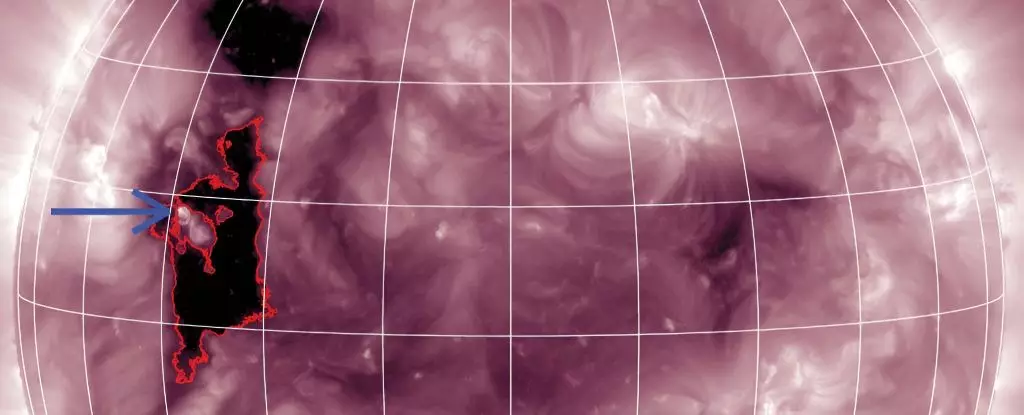In late October 2023, an unprecedented celestial event captured the attention of astronomers worldwide: a colossal coronal hole on the Sun’s surface released an astounding volume of helium-3, marking a significant moment in the study of solar dynamics. This remarkable eruption not only produced a rare isotope of helium at levels unseen before but also opened new avenues for research into the complex interactions occurring in our star’s atmosphere. These solar phenomena are a constant reminder of the Sun’s dynamism and the secrets it holds, challenging existing notions about solar activity and composition.
The event occurred between the 24th and 25th of October, when the European Space Agency (ESA) and NASA’s Solar Orbiter recorded helium-3 emanating from the Sun in concentrations 180,000 times higher than typically found. This finding raises fundamental questions about the processes occurring at the solar corona and how these might influence our understanding of cosmic matter distribution.
The Significance of Helium-3
Helium-3 is an intriguing isotope, significantly scarcer than its more prevalent counterpart, helium-4. The rarity of helium-3 in the solar wind—roughly 0.002 percent—coupled with its unique charge-to-mass ratio, suggests that it requires specific conditions to be accelerated effectively. Astrophysicist Radoslav Bučík from the Southwest Research Institute asserts that solar jets are adept at propelling helium-3 to remarkable speeds, illuminating an area of research that could overlap with both solar physics and potential energy uses. Given helium-3’s applications in fusion energy, understanding its dynamics could be pivotal for future energy solutions on Earth.
This recent discovery offers not just a rare glimpse into the heliophysical processes but also amplifies the discussion about the fundamental makeup of our solar system. After the Big Bang, most hydrogen was converted into helium-4, leaving helium-3 as a byproduct of primordial nucleosynthesis. The disparity in their abundance poses questions about the processes that lead to different isotopic distributions throughout cosmic history.
Investigating the Coronal Hole
Coronal holes are fascinating, transient features on the Sun characterized by gaps in the magnetic field. Unlike the luminous regions of the solar corona, coronal holes appear darker when viewed in ultraviolet or X-ray wavelengths due to their cooler and less dense plasma. Such features allow solar wind to escape more freely into space, which was the case during this recent eruption. Bučík’s observations noted that the magnetic fields in the vicinity of this coronal hole were weaker than what typically defines more active solar regions, which aligns with prior theories suggesting that regions with reduced magnetic activity are conducive to helium-3 enrichment.
This research also challenges our understanding of solar particle events. Typically, these events are expected to contain elevated levels of heavier elements, ranging from neon to iron. However, the event of October 2023 stood out for its surprising composition, being rich in lighter elements such as carbon, nitrogen, silicon, and sulfur while showing minimal increases in heavier components. This unconventional chemical profile suggests that the mechanisms driving solar eruptions are more varied than previously understood.
Implications for Solar Physics
This highly concentrated helium-3 outflow invites further speculation regarding the scale and frequency of such solar events. It raises the intriguing possibility that they might be more common than we realize but often go unnoticed due to their lower energies. The position of the Solar Orbiter—situated halfway between the Earth and the Sun—affords researchers a unique vantage point to observe and quantify the volatile phenomena of our star, potentially uncovering more solar secrets that remain shrouded by distance.
These types of findings not only enrich the astrophysical narrative but also bolster our understanding of solar wind interactions with interstellar space. The implications are far-reaching, touching upon everything from space weather predictions to our broader cosmological understanding.
This extraordinary incident emphasizes the complex interplay between solar forces and isotopic production, showcasing that even familiar celestial bodies like our Sun are capable of surprising revelations. As scientists continue to probe deeper into these solar mysteries, the knowledge gained will surely augment our comprehension of both the Sun and the fabric of the universe itself.


Leave a Reply